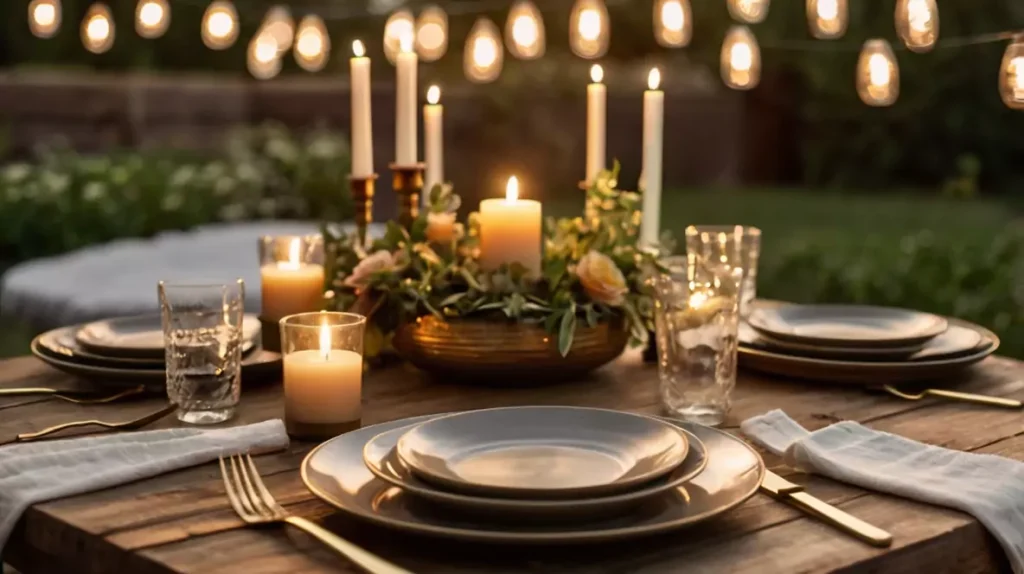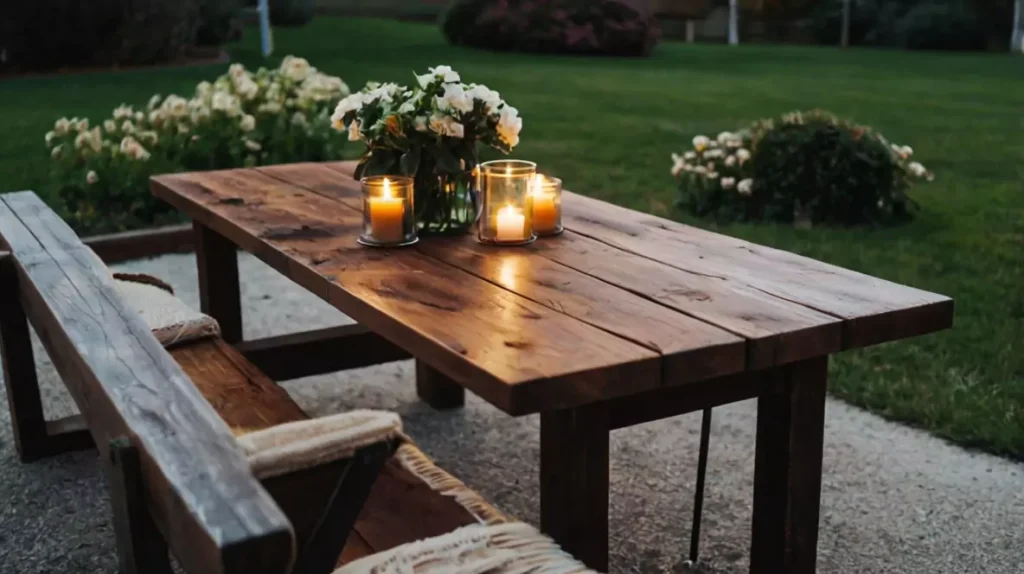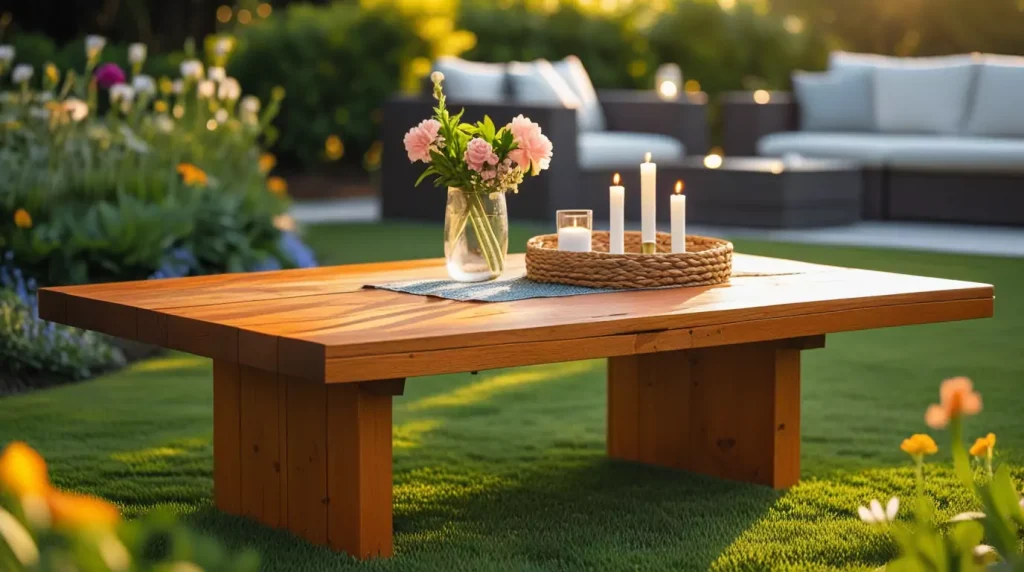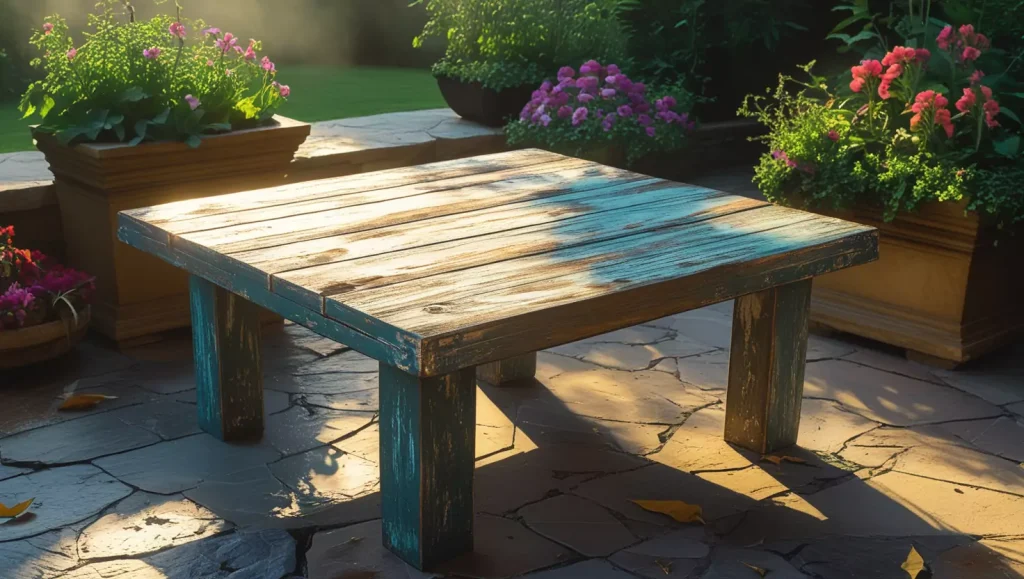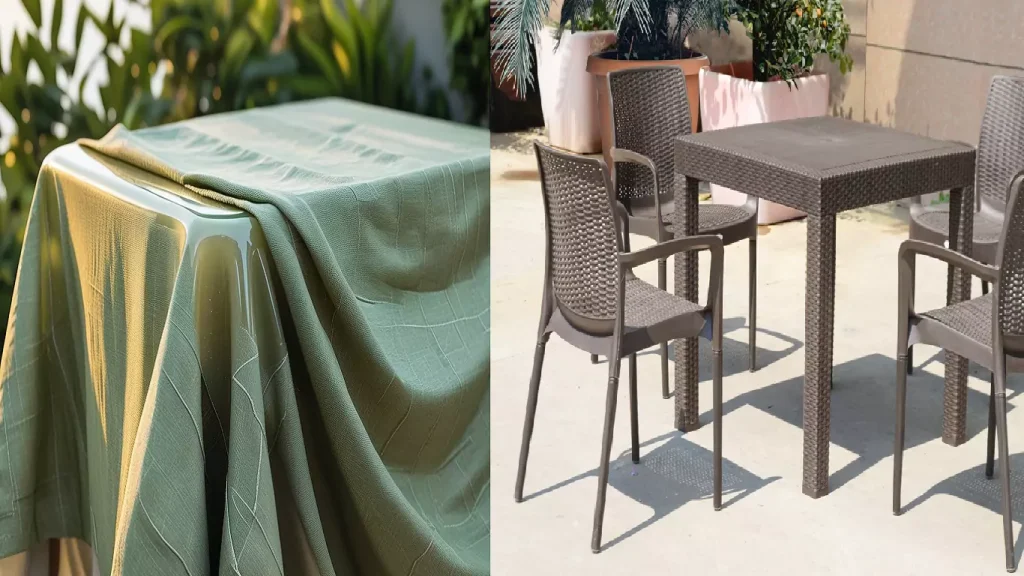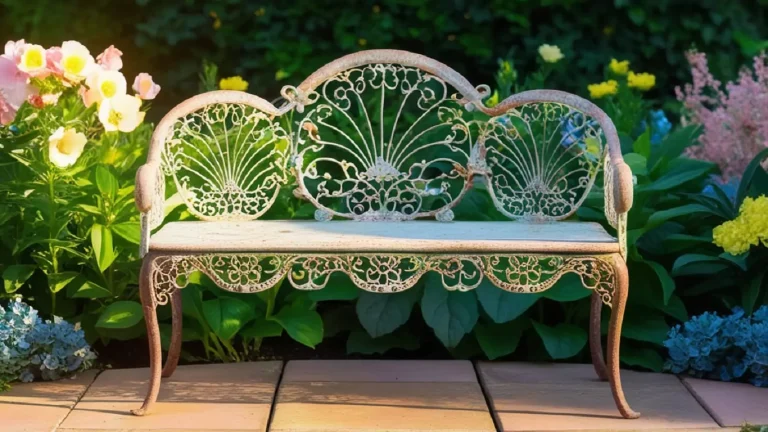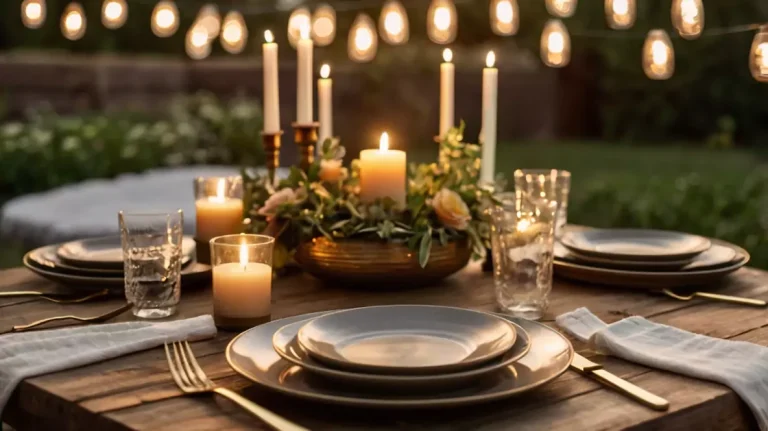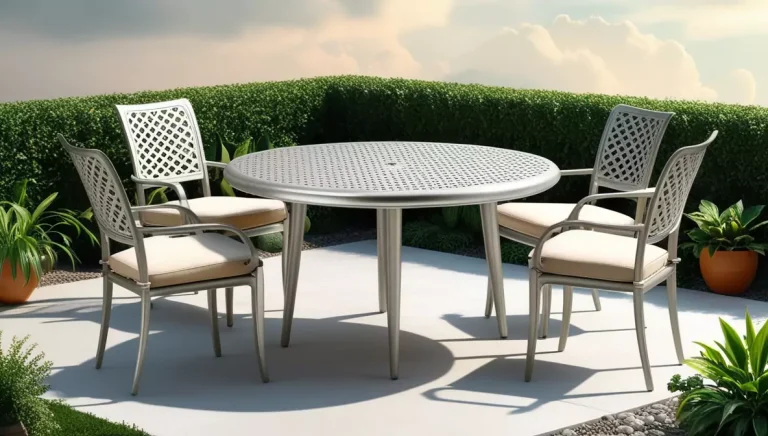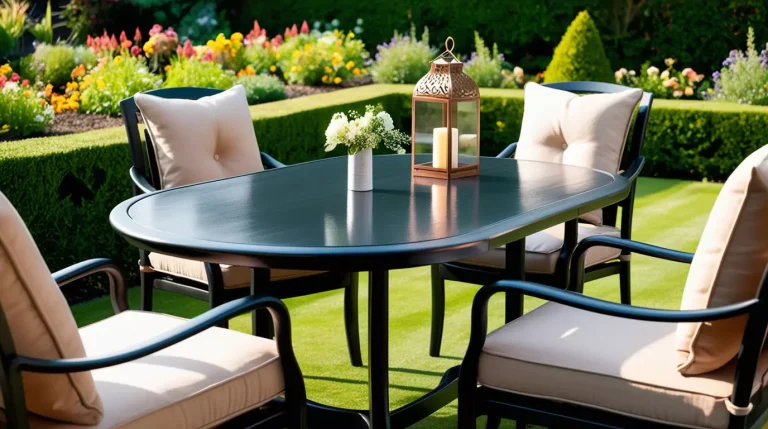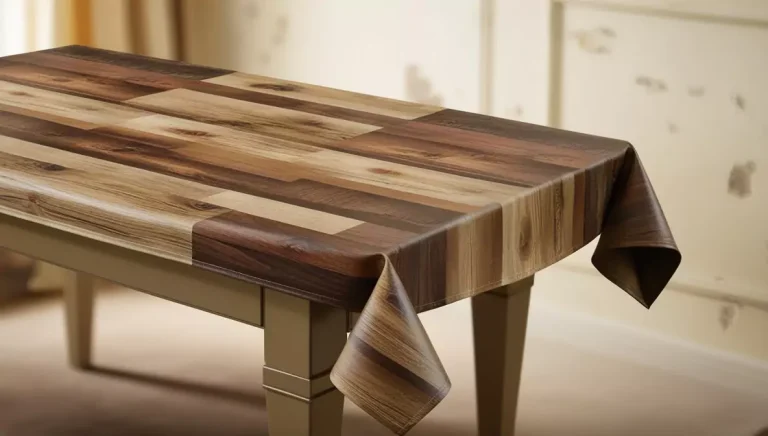Facts You Have To Know While Choosing Best Wood for Garden Table
Garden tables can transform your outdoor space into a functional and aesthetic area. However, choosing the right wood is crucial for durability and beauty. Wood, being a natural material, needs to withstand outdoor conditions like moisture, sun exposure, and pests. In this guide, we’ll explore the best wood for garden table, wood types that balance cost and performance, and affordable table options. Whether you want a high-end table or a budget-friendly option, you’ll find the right material to enhance your garden space.
Best Wood for Garden Table
When it comes to garden tables, durability is essential. The wood must be able to endure outdoor elements like rain, heat, and humidity. Below are some of the best wood types for garden tables that combine beauty and performance:
Teak:
The Gold Standard for Outdoor Furniture Teak is known for its exceptional durability and natural beauty. This hardwood contains natural oils that make it resistant to water, insects, and rot. While it may be expensive, its longevity makes it an excellent investment. Teak is one of the best wood choices for garden tables because it can last decades with minimal maintenance.
Cypress:
Affordable and Durable Cypress is a solid alternative to teak. Because of its inherent resistance to insects and deterioration, it can be used outdoors. Though more affordable, it still offers durability and a rustic look. The natural oils in cypress help it resist harsh outdoor conditions, making it a good choice for those on a mid-range budget.
Redwood:
Beauty and Strength Redwood is another top-tier choice for outdoor furniture. Its rich color and natural resistance to decay make it a favorite. While redwood can be more expensive in some regions, its beauty and weather resistance justify the cost. This wood is ideal for those who want a striking garden table that stands out.
White Oak:
Power and Resistance to Moisture White oak has a high level of pest and moisture resistance. Its dense grain structure makes it durable, and it performs well in wet conditions. Although it requires sealing or finishing, its natural toughness makes it one of the best woods for outdoor use. You get the strength of a hardwood without breaking the bank.
Acacia:
An Affordable Hardwood Option Acacia is a dense, water-resistant hardwood, often used for outdoor furniture. It offers good durability at a lower price point compared to teak. It can withstand weather conditions without much wear and tear. This makes acacia a great choice for budget-conscious buyers seeking long-lasting garden tables.
Good Wood for Outdoor Tables
While teak and redwood stand out, other wood types also provide good quality at a more affordable price. Here are some options to consider if you want a balance between cost and performance:
Mahogany (Khaya):
Rich and Durable Mahogany is known for its rich color and durability. It has natural resistance to rot and insects, which makes it a good choice for outdoor furniture. Without the hefty price tag of teak, mahogany provides an opulent appearance.
Ipe:
One of the hardest timbers is ipe, which is resilient to weather and tough. It is incredibly resilient to rot, weather, and insects. Though ipe is pricier than some other options, it’s perfect if you need a sturdy outdoor table. Its dense structure requires pre-drilling for screws but ensures a long-lasting product.
Eucalyptus:
Budget-Friendly Teak Alternative Eucalyptus is often considered a cheaper alternative to teak. It shares similar properties, such as water resistance and durability, but comes at a lower cost. Eucalyptus is ideal for those who want the benefits of teak without the steep price.
Cedar:
Lightweight and Naturally Resistant Cedar is an affordable and lightweight wood with natural resistance to decay. Its pleasant aroma is another plus. Cedar develops a silvery patina and weathers wonderfully over time. This makes it a great choice if you want low-maintenance, durable outdoor furniture.
Pine:
Softwood Option for Budget-Conscious Buyers Pine is a softwood that’s easy to work with and widely available. It can be treated with sealers or stains to improve its resistance to outdoor conditions. Pine is the go-to option if you’re looking for an affordable and customizable wood for garden tables. However, it does require regular maintenance to protect it from weather damage.
Cheapest Garden Tables: Budget-Friendly Materials
Not everyone needs or can afford high-end wooden garden tables. Thankfully, there are plenty of cost-effective alternatives. These materials are less expensive but still functional for outdoor use. Consider the following options if you’re working with a tighter budget:
Plastic Tables:
Affordable and lightweight The least expensive choice is a plastic garden table. They are lightweight, easy to move, and require little to no maintenance. They are resistant to rain and sun, but their downside is they might not have the same aesthetic appeal as wooden tables. For quick, affordable outdoor furniture, plastic is hard to beat.
Metal Tables:
Durable and Weather-Resistant Metal tables, often made from aluminum or steel, offer durability and weather resistance at an affordable price. Aluminum, in particular, is rust-resistant, making it ideal for outdoor use. Metal tables are usually cheaper than hardwood alternatives and come in a wide variety of styles.
Bamboo Tables:
Eco-Friendly and Inexpensive Bamboo is an eco-friendly material that’s relatively inexpensive. It provides a distinctive, tropical look and is a sustainable substitute for conventional wood. While bamboo is not as durable as teak or cypress, it can still last several years with proper care and maintenance.
Foldable Tables:
Space-Saving and Cost-Effective Foldable garden tables are excellent for small spaces. They are often cheaper than permanent tables and easy to store when not in use. Made from materials like metal, plastic, or treated wood, these tables are functional and budget-friendly.
Discount Stores and Brands:
Bargain Deals If you’re looking for the cheapest garden tables, stores like IKEA, B&M, or Homebase often offer budget-friendly outdoor furniture. They carry a range of materials from wood to plastic, allowing you to choose what fits your style and budget. Keep an eye on sales, especially during the offseason, to snag a great deal.
Importance of Choosing the Best Wood for Garden Table
When selecting wood for your garden table, quality should be a priority. Here’s why choosing the best wood for garden table matters:
- Durability: Quality wood ensures your table withstands harsh outdoor conditions. Weather-resistant woods like teak, cedar, and cypress are key to a long-lasting table.
- Aesthetic Appeal: High-quality wood enhances the look of your garden. Rich grains and natural finishes elevate the outdoor space, giving it a timeless beauty.
- Low Maintenance: Some woods require less upkeep. Teak, for example, needs minimal maintenance due to its natural oils, saving you time and effort.
- Value for Money: Good wood pays off in the long run. While it may be pricier upfront, its durability means fewer repairs or replacements.
- Environmental Considerations: Choosing sustainable wood reduces environmental impact. Opt for FSC-certified woods, which ensure responsible forestry practices.
How to Choose the Best Wood for Your Garden Table
Choosing the right wood for your garden table involves several considerations. Here’s a quick guide:
- Climate Consideration: If you live in a wet or humid area, choose water-resistant woods like teak or cedar. For dry climates, eucalyptus or acacia works well.
- Maintenance Level: Choose wood that matches your maintenance preference. Teak and redwood require less maintenance, while pine and acacia need periodic sealing or staining.
- Durability: Opt for wood with natural resistance to rot, insects, and weather damage. Teak, cypress, and white oak are excellent choices for long-lasting garden tables.
- Budget Constraints: Balance between quality and cost. Teak may be pricey, but it offers unmatched durability. Pine or bamboo is cheaper, but it requires more care and maintenance.
- Aesthetic Preferences: The wood should complement your garden’s design. Teak and cedar offer a natural, rustic look, while stained pine or painted wood can add a modern touch.
Features of High-Quality Garden Tables
High-quality garden tables not only provide functionality but also add value to your outdoor space. Look for the following features:
- Weather Resistance: The best wood for garden table should be resistant to moisture, UV rays, and pests.
- Durable Construction: A well-made table should have strong joinery and robust construction to withstand outdoor conditions.
- Low Maintenance: Quality tables should require minimal upkeep, allowing you to enjoy your outdoor space without constant repairs.
- Aesthetic Appeal: The wood grain and finish should enhance your garden’s beauty, creating a cohesive outdoor look.
- Sustainability: Choosing tables made from sustainably sourced wood ensures you’re making an eco-friendly choice.
FAQs on Best Wood for Garden Table and Outdoor Furniture
Q: What wood is best for an outdoor table?
A: Teak is often considered the best wood for outdoor tables due to its natural oils, which make it water-resistant and durable. Cedar and cypress are also excellent choices because of their resistance to decay and insects.
Q: What is the most durable wood for garden furniture?
A: Teak is the most durable wood for garden furniture, known for its longevity and resistance to weather. Other durable options include ipe, cypress, and redwood.
Q: Which wood is best for tables?
A: For garden tables, teak, cedar, and acacia are top choices due to their durability and resistance to outdoor elements. For indoor tables, hardwoods like oak, walnut, and maple are preferred for their strength and aesthetic appeal.
Q: What is the best wood to make a garden bench?
A: Teak and redwood are excellent choices for garden benches due to their natural resistance to moisture and insects. Cedar is also a good option because of its lightweight nature and aromatic properties.
Q: How do I maintain wooden outdoor furniture?
A: Regular maintenance includes cleaning the wood with mild soap and water, applying protective sealants, and covering the furniture during harsh weather. Sanding and reapplying finish periodically can also extend the wood’s life.
Q: Are there eco-friendly options for garden furniture wood?
A: Yes, choosing FSC-certified woods like teak, cypress, and eucalyptus ensures sustainable sourcing. Reclaimed wood is also an eco-friendly option.
Q: Can I use pine wood for outdoor furniture?
A: Pine can be used for outdoor furniture if it’s treated to resist rot and insects. However, it requires more maintenance and doesn’t last as long as more durable woods like teak or cedar.
Q: How does treated wood compare to natural hardwoods for outdoor use?
A: Treated wood can be a cost-effective option and offers decent resistance to decay and insects. However, natural hardwoods like teak, cedar, and redwood generally provide better durability and aesthetics.
Q: What are the advantages of using cedar for outdoor furniture?
A: Cedar is lightweight, naturally resistant to rot and insects, and has a pleasant aroma. It’s also relatively easy to work with and has a beautiful, natural finish.
Q: Is teak worth the higher price for garden furniture?
A: Yes, teak’s natural oils make it highly resistant to water, insects, and decay, which means it lasts for decades with minimal maintenance. The initial investment is often offset by its longevity and low upkeep.
Q: What is the cheapest wood for garden tables?
A: Pine and treated pine are among the cheapest woods for garden tables. While affordable, they require proper treatment and maintenance to prevent rot and extend their lifespan.
Q: How do I choose the best wood for my garden table?
A: Consider your local climate, the level of maintenance you’re willing to commit to, your budget, and the desired aesthetic. Durable, weather-resistant woods like teak and cedar are ideal for longevity, while budget-friendly options like treated pine can be suitable with proper care.
Conclusion
Choosing the best wood for garden table is essential for long-lasting, beautiful furniture. Whether you opt for teak, redwood, or acacia, investing in high-quality wood ensures durability and aesthetic appeal. For budget-conscious buyers, options like pine, bamboo, or plastic provide affordable solutions. By understanding the properties of each wood type and your own needs, you can select the perfect garden table that enhances your outdoor space for years to come.

